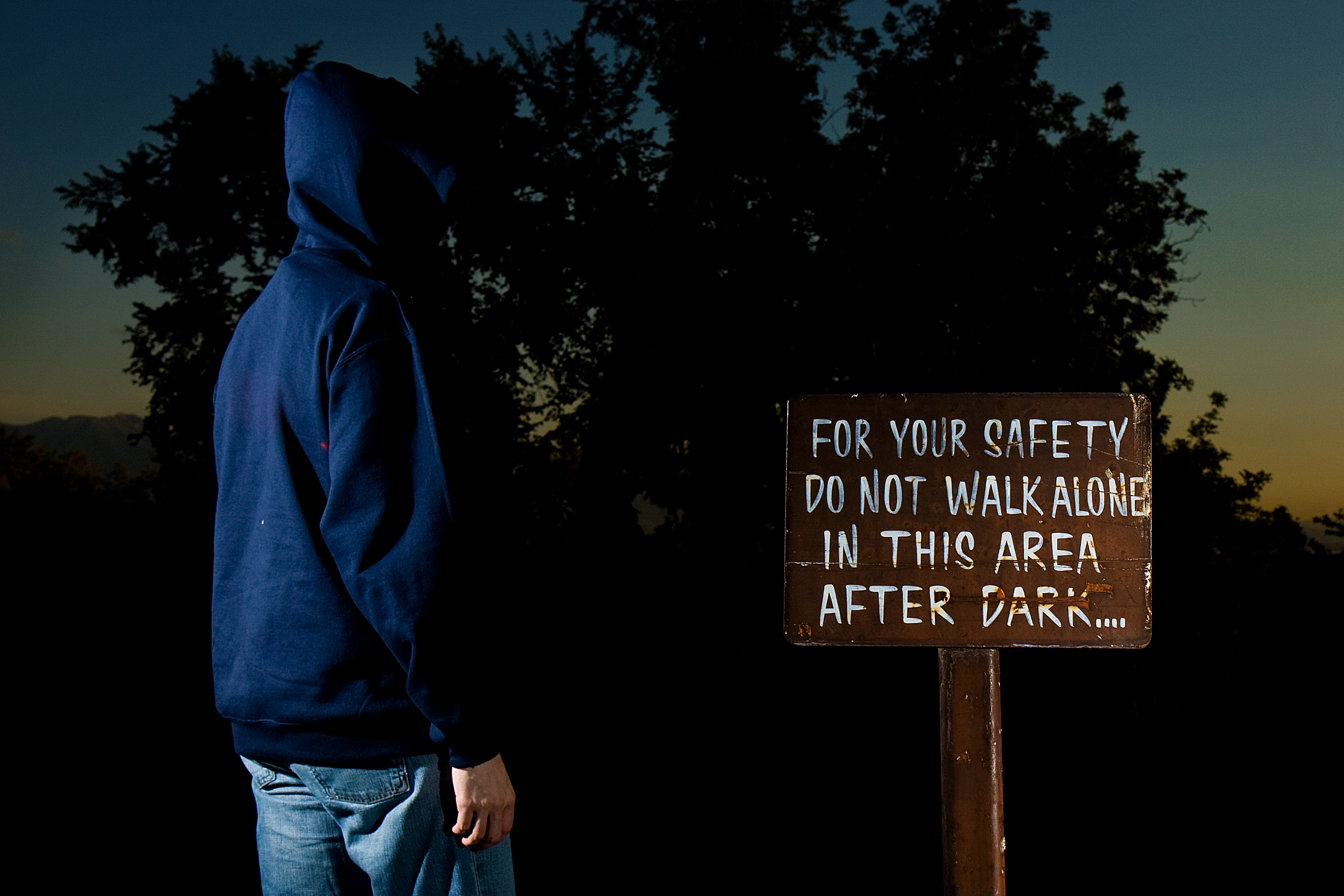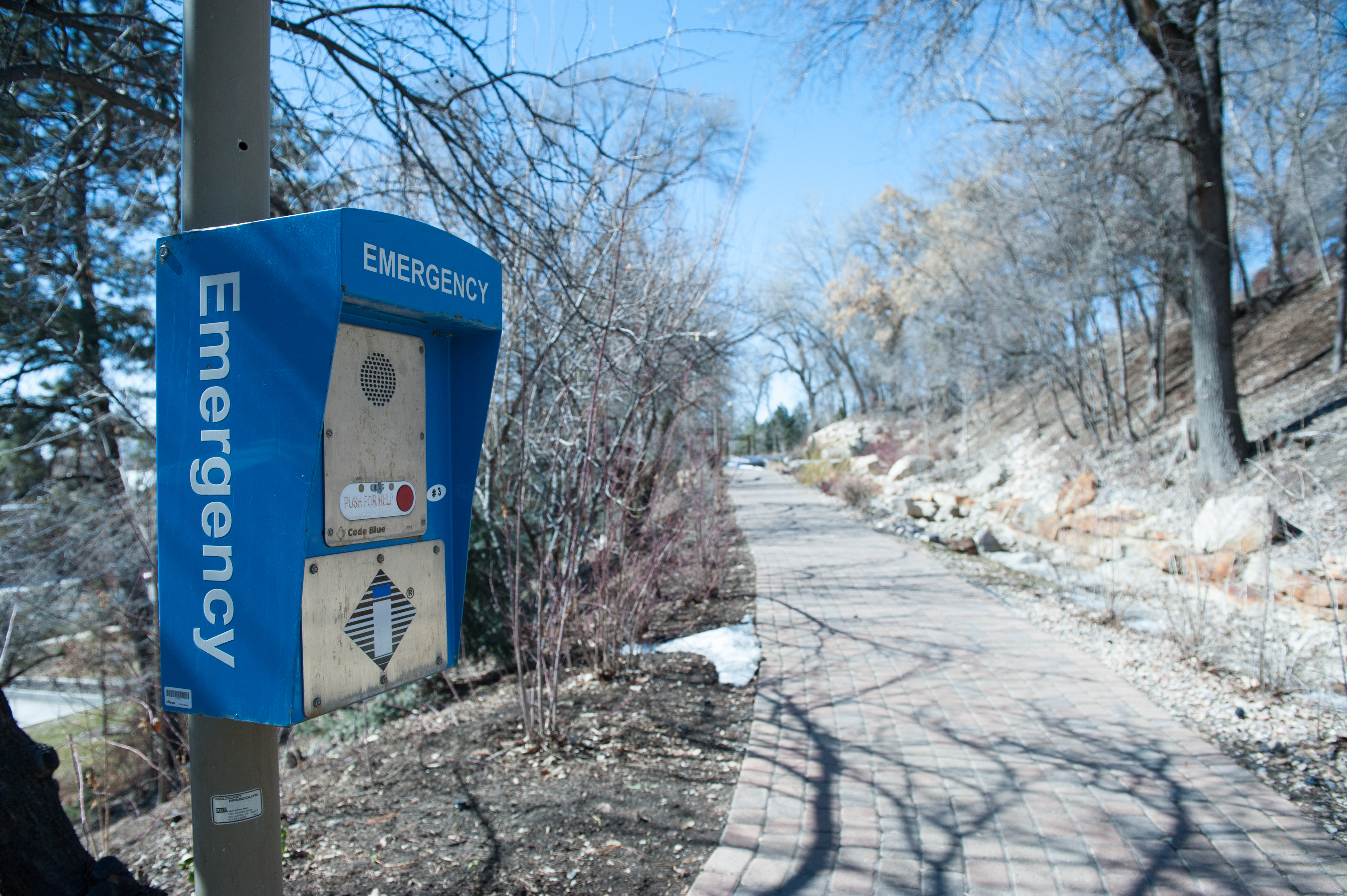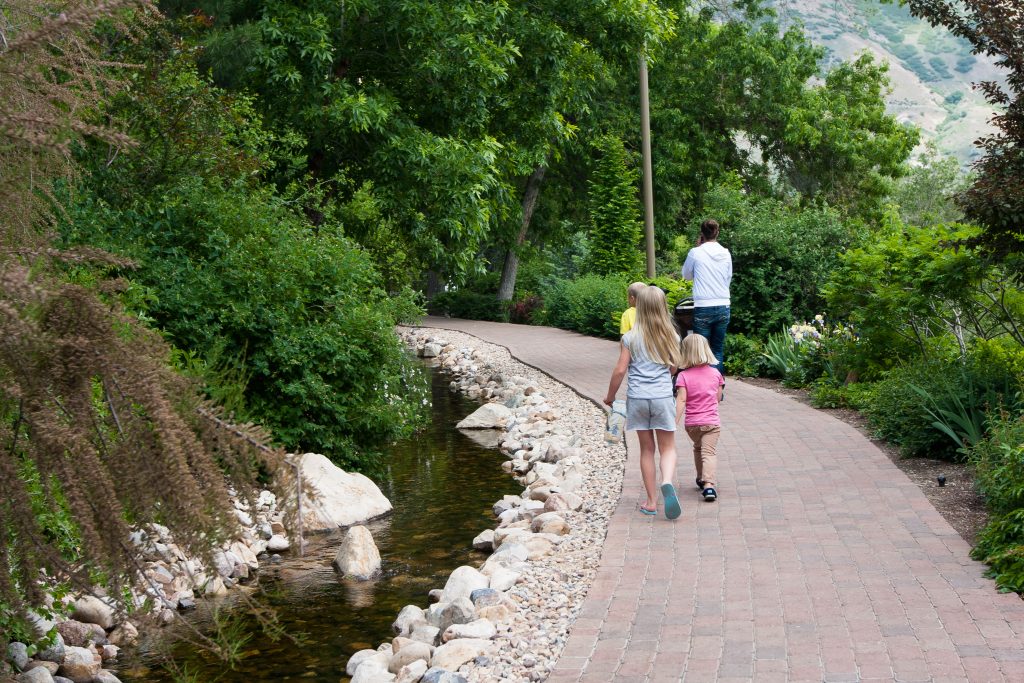
BYU re-landscaped the hill west and south of campus in 2010 to both beautify the campus and help students feel safer. But despite landscaping efforts, the area has retained its infamous nickname “Rape Hill.”
“I’ve heard not to go over there,” said BYU freshman Tatum Thomas. “I mean, I think they’re myths, but I still don’t really go over there.”
BYU sophomore Aubrey Nielson said she heard south campus in general is “more sketchy.”
“If I’m walking by myself at night, I usually call my mom or one of my friends so I’m on the phone talking to someone,” Nielson said.
Persistent rumors
Despite the hill’s reputation, there has never been a rape reported in the area, according to University Police Sergeant Elle Martin.
“I believe there are a lot of myths that need to be corrected, but these myths also keep us more alert now,” Martin said.
Martin encouraged students to be aware of their surroundings no matter where they are.
BYU student Bethany Borup from Boise, Idaho said she knows that no one is exempt from incident.
In November 2015, Borup was walking home from campus on 700 North when a man started following her. When Borup looked back, the man exposed himself to her. Borup went directly home and called the police.
“I have always felt safe in Provo,” Borup said. “It made me feel not safe anymore in a place that I always had. That was the worst part.”
Student safety
In spite of the re-landscaping south of campus, Martin warned that walking in the dark may still present dangers.

“Because south campus has less lighting benefits because of the thick foliage, everyone needs to take precautions into consideration when they walk through this area or any other location on campus that might be dark,” Martin said.
Martin warned against wearing earbuds or looking down at cell phones while walking.
“We live in a world where we need to be more aware of where we are and what we are doing,” Martin said.
She also added that walking in lit areas is always a safer way to travel in any location.
Martin encouraged students to report all suspicious activities on or off campus to the proper authorities.

Re-landscaping the area
A canal used to bring water from the Provo River to local farmers and their orchards, beginning in the late 1800s. This canal — known as the Upper East Union Canal — flowed along the south side of the BYU campus, a then heavily-wooded area.
Over the years, the need for a canal diminished until it was no longer used. Provo City then used the empty canal for drainage after rainstorms.
In 2009, BYU installed an underground storm drainage system. This meant that the old canal was available again for use as a stream bed.
In February 2010, the South Campus Stream and Trail restoration project began. The new stream follows the same path as the old one, running from the Smith Fieldhouse west of campus to the new Life Sciences Building. It was finished in November 2010, and water began flowing in the stream in April 2011.

“Along the trail we have installed areas with benches and natural rocks,” former BYU grounds director Roy Peterman said in an article about the new landscaping. “A large variety of plants surround the waterway and offer educational opportunities.”
Peterman also noted the safety features of the new landscape.
“Light posts have also been located along the trail to make it a well-lit area at night,” Peterman said.
South campus has now been completely transformed from a heavily wooded area to one in which people can enjoy the beauty and serenity of the area, according to Peterman.




